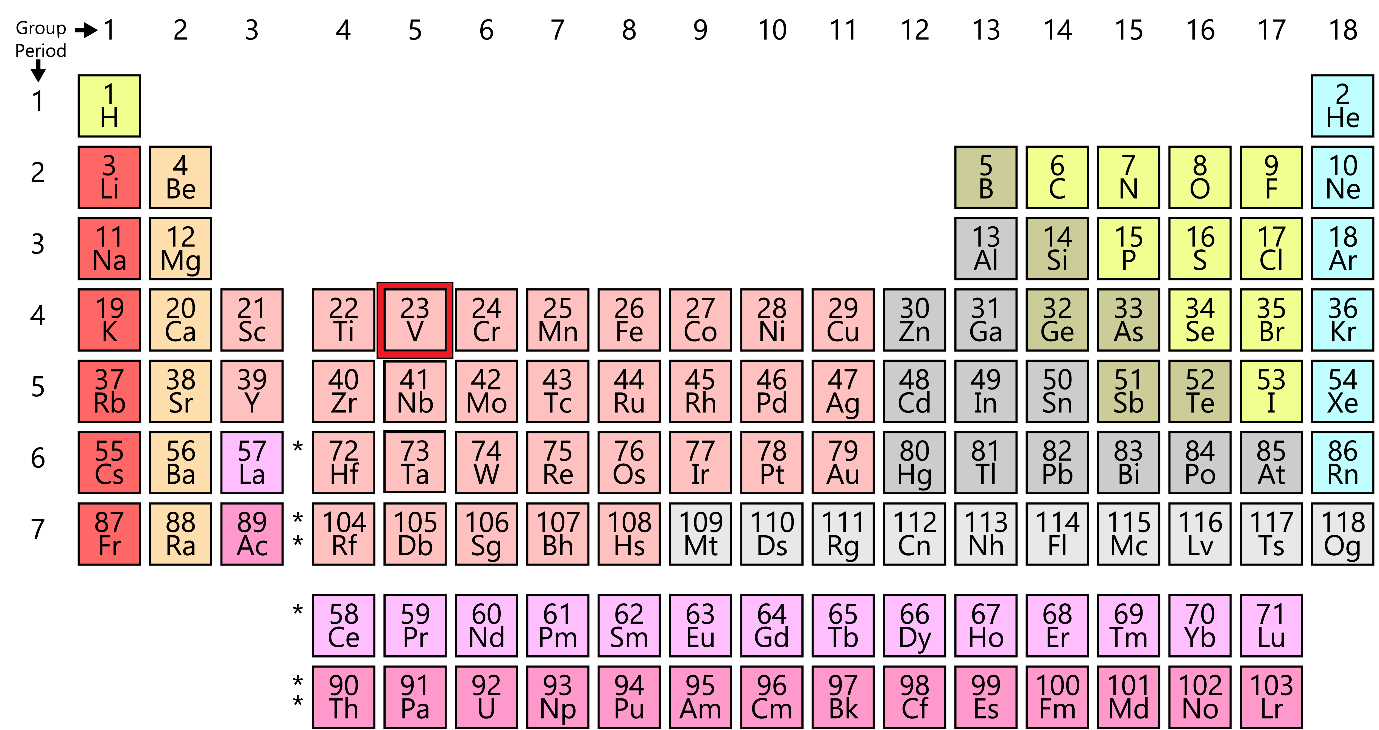
The electronic configuration of vanadium is:
A.
B.
C.
D.
Answer
496.5k+ views
Hint: Recall the atomic number of the elements vanadium and add the electrons to the shells according to the Aufbau principle. Take note of the block in which it is present.
Complete step by step answer:
Let us look at the periodic table and locate vanadium.

Here, we can see that the atomic number of vanadium is 23 and it is present in the d-block of elements. This implies that the last electron to be filled in the orbitals of vanadium will be in the d-orbital. First, we will see what the configuration of vanadium is, upto argon, or 18 electrons. The configuration of argon is
First, let us see the orbitals placed in the order of increasing energy. The order is:
From this, we can say that after the
So, the correct answer is “Option C”.
Note: Please don’t get confused if the orbitals are not given in the order specified by the Aufbau principle. Always draw the diagram for the relative energy of the orbitals before attempting these questions.
Complete step by step answer:
Let us look at the periodic table and locate vanadium.

Here, we can see that the atomic number of vanadium is 23 and it is present in the d-block of elements. This implies that the last electron to be filled in the orbitals of vanadium will be in the d-orbital. First, we will see what the configuration of vanadium is, upto argon, or 18 electrons. The configuration of argon is
First, let us see the orbitals placed in the order of increasing energy. The order is:
From this, we can say that after the
So, the correct answer is “Option C”.
Note: Please don’t get confused if the orbitals are not given in the order specified by the Aufbau principle. Always draw the diagram for the relative energy of the orbitals before attempting these questions.
Recently Updated Pages
Master Class 9 General Knowledge: Engaging Questions & Answers for Success

Master Class 9 English: Engaging Questions & Answers for Success

Master Class 9 Science: Engaging Questions & Answers for Success

Master Class 9 Social Science: Engaging Questions & Answers for Success

Master Class 9 Maths: Engaging Questions & Answers for Success

Class 9 Question and Answer - Your Ultimate Solutions Guide

Trending doubts
State and prove Bernoullis theorem class 11 physics CBSE

Who built the Grand Trunk Road AChandragupta Maurya class 11 social science CBSE

1 ton equals to A 100 kg B 1000 kg C 10 kg D 10000 class 11 physics CBSE

State the laws of reflection of light

One Metric ton is equal to kg A 10000 B 1000 C 100 class 11 physics CBSE

Difference Between Prokaryotic Cells and Eukaryotic Cells




